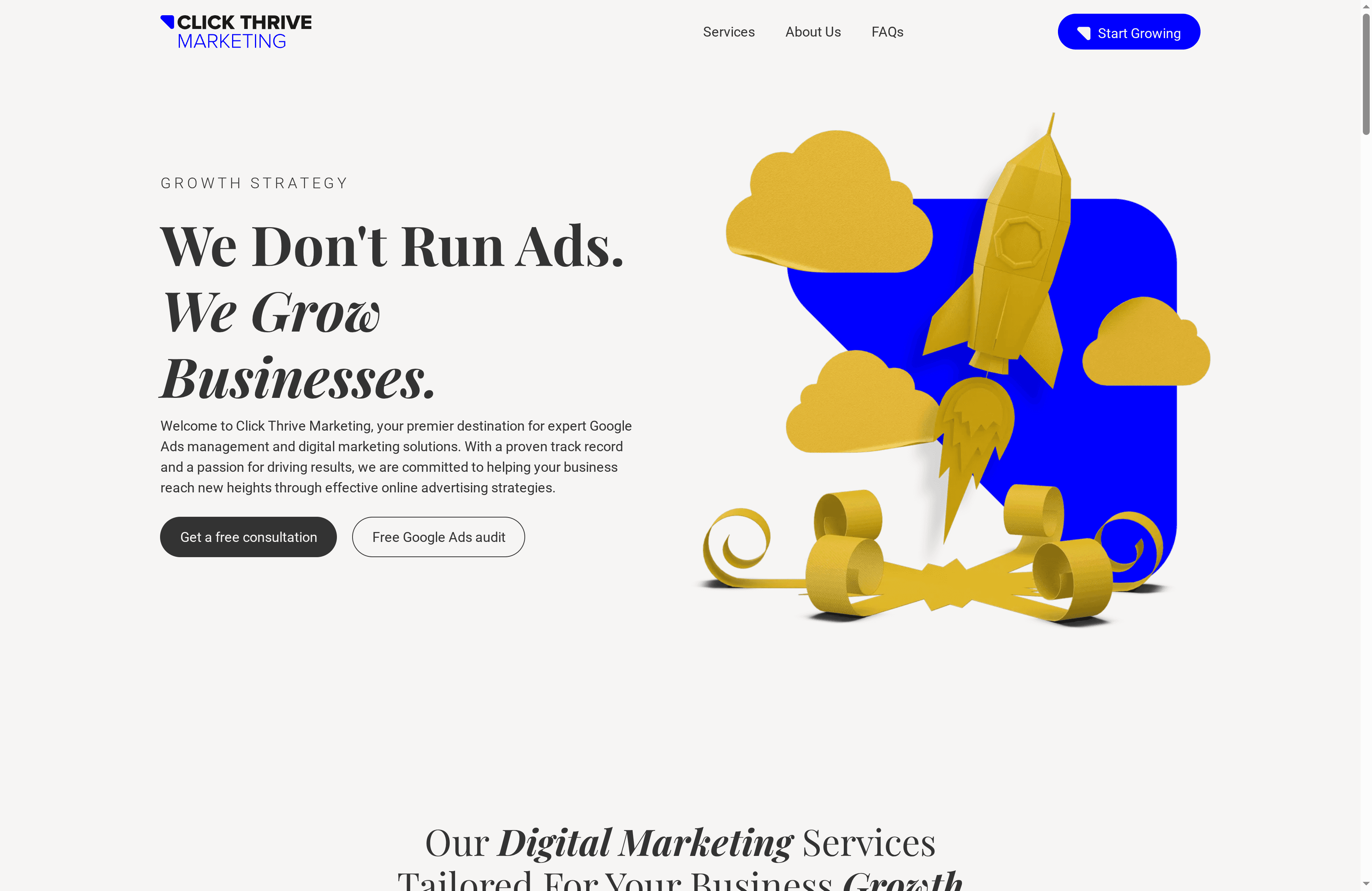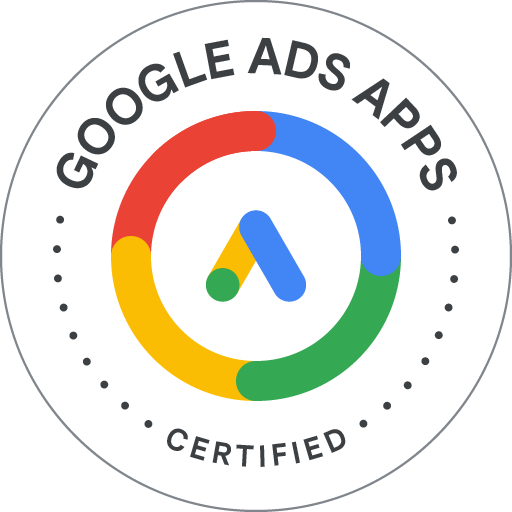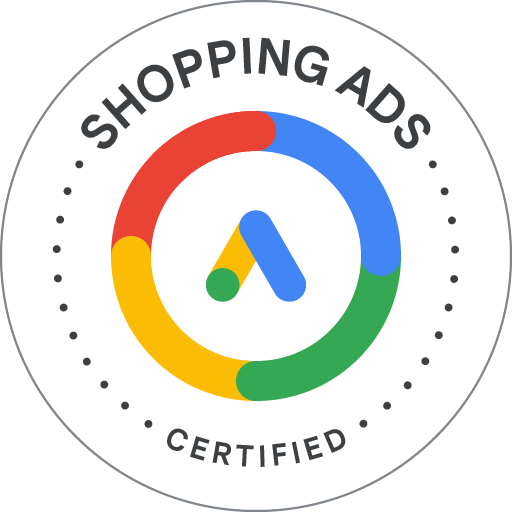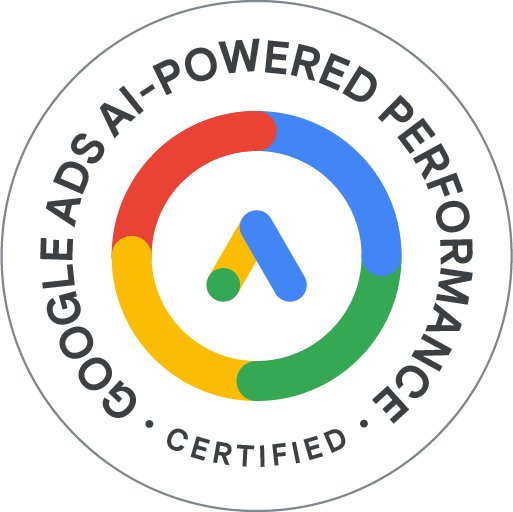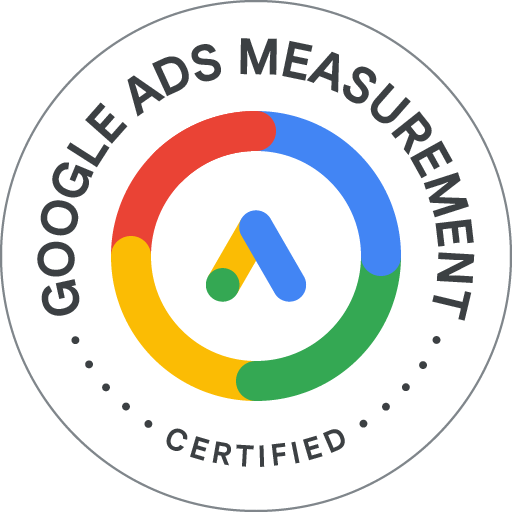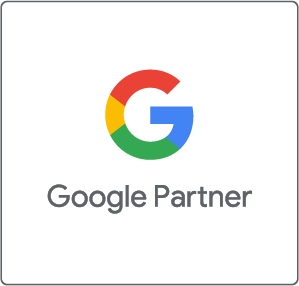More than 60 percent of small businesses say they struggle to reach customers who are ready to take action now. Local advertising is more competitive than ever, especially for service providers who need their phones ringing with real opportunities. Whether you run a law firm, a bakery, or a plumbing company, learning how to use targeted Google Ads strategies can help you attract high intent leads, boost conversions, and outperform your local competition.
Table of Contents
- Local Service Campaigns To Drive High-Intent Calls
- Lead Generation Campaigns For Form Submissions
- Remarketing Campaigns To Re-Engage Past Visitors
- E-Commerce Campaigns Using Dynamic Product Ads
- Competitor Targeting With Search Campaigns
- Display Ads For Brand Awareness In Your Area
- YouTube Video Campaigns For Customer Education
Quick Summary
| Takeaway | Explanation |
|---|---|
| 1. Optimize your business profile for Local Service Ads. | Complete and accurate profiles enhance credibility and attract high-intent customers. |
| 2. Use compelling lead magnets in forms. | Offering valuable resources encourages potential customers to share contact information. |
| 3. Implement segmented remarketing strategies. | Tailored ads re-engage previous visitors, increasing phone calls and conversions. |
| 4. Create visually appealing display ads for local targeting. | Eye-catching ads ensure brand messages reach the right audience in your area. |
| 5. Develop informative YouTube videos for engagement. | Educational video content builds trust and connects with potential customers effectively. |
1. Local Service Campaigns to Drive High-Intent Calls
Local Service Ads represent a powerful Google Ads strategy specifically designed to help businesses generate immediate customer connections through targeted local advertising. These campaigns are particularly effective for service-based businesses seeking to attract high-intent customers who are ready to make an immediate purchase or booking.
How Local Service Campaigns Work
Unlike traditional Google Ads, Local Service Ads appear at the very top of search results with a distinctive green “Google Guaranteed” badge. This badge signals credibility and trustworthiness, which can significantly increase click through rates and customer confidence. The ads are triggered by specific local service searches and only charge businesses when a potential customer actually contacts them directly.
A remarkable case study from Workshop Digital demonstrated the immense potential of these campaigns. A personal injury law firm implemented Local Services Ads and achieved a stunning 300% increase in leads by strategically targeting high intent local clients.
Key Implementation Strategies
To maximize the effectiveness of Local Service Campaigns, businesses should:
- Ensure complete and accurate business profile information
- Obtain the Google Guaranteed badge by passing background checks
- Set competitive pricing for ad budget
- Maintain quick response times to incoming leads
- Continuously monitor and optimize campaign performance
Similar to the success of Miller’s Bakery, which saw a 100% rise in conversions during peak hours through strategic local targeting, businesses can leverage these campaigns to transform their digital marketing approach.
Local Service Campaigns provide an exceptional opportunity to connect directly with customers actively searching for your specific services within your geographic area. By prioritizing high intent interactions and leveraging Google’s trust signals, businesses can dramatically improve their lead generation and conversion rates.
2. Lead Generation Campaigns for Form Submissions
Lead generation campaigns powered by Google Ads represent a strategic approach to capturing potential customer information through targeted digital advertising. These campaigns focus on creating compelling landing pages with optimized forms that entice visitors to share their contact details in exchange for valuable resources or service information.
Campaign Design and Optimization
Successful lead generation campaigns require a meticulous blend of persuasive copywriting, strategic targeting, and seamless user experience. Businesses must craft landing pages that communicate clear value propositions while minimizing form friction. This means designing forms that are short, intuitive, and provide immediate perceived value to potential leads.
Key Elements of High Converting Forms
To maximize form submission rates, businesses should consider:
- Limiting form fields to essential information
- Offering a compelling lead magnet or incentive
- Using clear and direct call to action language
- Implementing trust signals like security badges
- Creating mobile responsive form designs
The performance marketing process for maximizing ROI becomes critical in refining these campaigns. By continuously testing and optimizing form design, copy, and targeting, businesses can incrementally improve their lead generation efficiency.
Understanding that each form submission represents a potential customer relationship is key. Businesses must view lead generation not just as a transactional process but as the first step in building meaningful customer connections through strategic digital marketing approaches.
3. Remarketing Campaigns to Re-Engage Past Visitors
Remarketing campaigns represent a powerful digital strategy that allows businesses to reconnect with potential customers who have previously interacted with their website but did not complete a desired action. By strategically displaying targeted ads to users who have already shown interest, businesses can significantly increase their chances of conversion.
How Remarketing Works
Remarketing leverages browser cookies to track website visitors and serve them personalized advertisements across various online platforms. This approach keeps your brand top of mind and provides multiple opportunities to re engage potential customers who might have been initially hesitant or distracted during their first website visit.
Adynext highlighted a compelling case study of Reliable Plumbing Solutions. By implementing a targeted remarketing campaign focusing on previous website visitors, they achieved a remarkable 35% increase in phone calls and a 20% rise in new customer acquisitions.
Strategic Remarketing Implementation
To maximize remarketing effectiveness, businesses should consider these key strategies:
- Create segmented audience lists based on specific website interactions
- Design visually appealing and contextually relevant ad creatives
- Set appropriate frequency caps to avoid ad fatigue
- Develop compelling offers that address potential customer hesitations
- Utilize cross platform remarketing across display and search networks
According to Saffron Edge, remarketing can dramatically improve brand visibility and customer engagement by maintaining consistent communication with potential clients who have already demonstrated initial interest.
Successful remarketing is not about overwhelming potential customers with ads but strategically reminding them of the value your business offers. By thoughtfully crafting these campaigns, you can transform passive website visitors into active leads and customers.
4. E-commerce Campaigns Using Dynamic Product Ads
Dynamic product ads represent a sophisticated Google Ads strategy that allows e-commerce businesses to automatically display personalized product advertisements based on a user’s previous website interactions. These intelligent ads dynamically showcase the exact products a potential customer has viewed, creating a highly targeted and personalized advertising experience.
How Dynamic Product Ads Function
Unlike traditional static advertisements, dynamic product ads pull real time information directly from your product catalog. They adapt in real time to match individual user interests, displaying specific items a potential customer has previously browsed or shown interest in during their website visit.
Research from arXiv highlights the advanced technological approach behind these campaigns. A Dual-attention Recurrent Neural Network study demonstrates the sophisticated methods used to accurately attribute conversions across multiple user touchpoints, emphasizing the complexity and precision of dynamic advertising strategies.
Strategic Implementation Techniques
To maximize the effectiveness of dynamic product ads, businesses should consider these key strategies:
- Create a comprehensive and updated product feed
- Segment audiences based on specific product interactions
- Design visually appealing product thumbnails
- Implement retargeting windows that match product purchase cycles
- Use competitive pricing and promotional messaging
Additional research from arXiv suggests advanced algorithmic approaches to content generation can further enhance ad performance. By leveraging machine learning and dynamic content strategies, businesses can create more engaging and personalized advertising experiences.
Dynamic product ads transform generic advertising into a precision instrument of customer engagement. They represent a powerful tool for e-commerce businesses seeking to convert browsing interest into actual sales by delivering the most relevant product recommendations at the perfect moment.
5. Competitor Targeting with Search Campaigns
Competitor targeting search campaigns represent a strategic approach to capturing potential customers by bidding on keywords associated with rival businesses. This advanced Google Ads technique allows businesses to position their advertisements directly in front of audiences actively searching for competitor services or products.
Strategic Keyword Selection
Successful competitor targeting requires careful keyword research and selection. Businesses must identify specific branded and non-branded keywords their competitors are likely ranking for while ensuring compliance with Google’s advertising policies. The goal is not to directly disparage competitors but to offer a compelling alternative solution.
Research from arXiv provides fascinating insights into targeting strategies. The study explores social influence in advertising, highlighting how strategic positioning and understanding audience psychological cues can significantly enhance ad effectiveness when targeting competitor markets.
Implementation Best Practices
To execute effective competitor targeting campaigns, consider these strategic approaches:
- Use precise branded keyword variations
- Craft compelling ad copy that differentiates your offering
- Create dedicated landing pages that address potential customer pain points
- Implement negative keyword strategies to refine targeting
- Monitor campaign performance and adjust bid strategies frequently
arXiv research additionally suggests examining systematic decision making processes in advertising can provide nuanced insights into targeting methodologies. Understanding these complex interactions allows businesses to develop more sophisticated competitor targeting approaches.
Competitor targeting is not about direct confrontation but about demonstrating superior value. By strategically positioning your advertisements and offering clear, compelling alternatives, you can effectively capture market share and attract customers seeking better solutions.
6. Display Ads for Brand Awareness in Your Area
Display ads represent a powerful digital marketing strategy that allows businesses to build brand recognition within specific geographic regions. By leveraging Google Display Network, companies can create visually engaging advertisements that appear across websites, mobile apps, and digital platforms targeting potential customers in their local area.
Targeting Precision
Unlike traditional advertising methods, display ads offer unprecedented precision in audience targeting. Businesses can narrow their audience based on location, demographics, interests, and online behaviors. This targeted approach ensures that brand messages reach the most relevant potential customers within a specific geographic region.
A compelling case study from Google Services showcased T-Mobile’s innovative approach to local mobile advertising. By strategically utilizing Google mobile ads, they successfully increased brand awareness and customer engagement in targeted areas, demonstrating the immense potential of localized display advertising.
Strategic Implementation Techniques
To maximize local display ad effectiveness, businesses should focus on:
- Creating visually striking and locally relevant ad designs
- Utilizing precise geographic targeting options
- Developing multiple ad variations for A/B testing
- Incorporating local imagery and cultural references
- Setting appropriate frequency and reach parameters
The Why Invest in Google Ads guide provides additional insights into crafting compelling digital advertising strategies. By understanding the nuanced approach to display advertising, businesses can transform their local brand visibility and customer engagement.
Display ads are more than just visual noise. They are strategic communication tools that help businesses build meaningful connections with local audiences, creating lasting brand impressions that translate into real world customer interactions.
7. YouTube Video Campaigns for Customer Education
YouTube video campaigns represent a dynamic approach to customer education and brand storytelling through targeted digital advertising. These campaigns leverage video content to communicate complex information, demonstrate product value, and establish deeper connections with potential customers across various industries.
Video Content Strategy
Successful YouTube advertising goes beyond simple promotional content. The most effective video campaigns create educational experiences that address customer pain points, showcase product functionality, and provide genuine value to viewers. By focusing on solving problems rather than direct selling, businesses can build trust and credibility.
Research from arXiv explores the potential of algorithmic content generation in advertising, highlighting sophisticated approaches to creating engaging video content. This research suggests that strategic video campaigns can significantly improve customer understanding and ad performance.
Strategic Implementation Techniques
To maximize YouTube video campaign effectiveness, businesses should:
- Develop concise and informative video content
- Target specific audience segments
- Use compelling thumbnails and titles
- Create clear calls to action
- Optimize video length for viewer retention
Additional research from arXiv emphasizes the importance of social influence in video advertising. Understanding how social cues and peer perspectives impact viewer engagement can help businesses craft more resonant video content.
YouTube video campaigns are not just about advertising. They are powerful educational tools that allow businesses to showcase expertise, build brand trust, and create meaningful connections with potential customers through strategic visual storytelling.
Below is a comprehensive table summarizing the strategies and key elements of different Google Ads campaigns discussed throughout the article.
| Campaign Type | Key Strategies | Expected Outcomes |
|---|---|---|
| Local Service Campaigns | Ensure accurate business profiles, obtain Google Guaranteed badge, set competitive budget, monitor performance | Increased high-intent customer connections and lead generation |
| Lead Generation Campaigns | Optimize landing pages, limit form fields, use clear CTAs, provide incentives | Enhanced form submission rates and lead capture efficiency |
| Remarketing Campaigns | Segment audience lists, design relevant ads, implement cross-platform strategies | Higher conversion rates from past visitors through strategic re-engagement |
| Dynamic Product Ads | Update product feeds, segment audiences, use targeted retargeting | Improved e-commerce conversion by showcasing relevant product ads |
| Competitor Targeting Campaigns | Research competitor keywords, craft unique ad copy, use negative keywords | Captured market share by offering compelling alternatives |
| Display Ads for Brand Awareness | Utilize precise targeting, create local ad designs, set appropriate reach | Increased local brand visibility and customer engagement |
| YouTube Video Campaigns | Develop educational videos, target specific audiences, optimize length and content | Enhanced customer education and brand storytelling through engaging video content |
Unlock Your Business Growth Potential with Expert Google Ads Strategies
The article “7 Real Examples of Google Ads Campaigns for Business Growth” highlights key challenges like attracting high-intent leads, re-engaging visitors, and driving measurable conversions through targeted campaigns. If you are striving to transform complex Google Ads tactics such as Local Service Campaigns, Remarketing, or Dynamic Product Ads into scalable results, you know how overwhelming and time-sensitive it can be to optimize continuously for the best return on investment.
Don’t let your advertising dollars go to waste. With Click Thrive Marketing, you gain a partner that manages over $30 million in Google Ads spend and specializes in customized solutions designed to maximize lead generation and conversion rates. Whether you need help with strategic campaign optimization, customer engagement, or scaling your digital presence, our award-winning expertise is ready to work for your business.
Explore actionable insights and strategies alongside our proven services in the Uncategorized Archives – Click Thrive Marketing.
Ready to turn Google Ads into your most powerful growth engine? Visit Click Thrive Marketing now to discover how our tailored lead generation and campaign management services can help you achieve consistent business growth. Take the next step toward measurable results today by partnering with experts who put your ROI first.
Frequently Asked Questions
How can Local Service Campaigns improve my lead generation?
Local Service Campaigns can enhance lead generation by targeting high-intent customers who are actively searching for your services. Ensure your business profile is complete and obtain the Google Guaranteed badge to increase trust, which can help improve your customer lead flow significantly within a few weeks.
What are the key elements for creating effective lead generation campaigns?
To create effective lead generation campaigns, focus on compelling landing pages and streamlined forms that require minimal information. Aim to minimize form friction, such as asking only for essential details, and offer a valuable lead magnet to encourage submissions, which can help boost your conversion rates.
How does remarketing help in converting previous website visitors?
Remarketing allows you to re-engage potential customers who did not make a purchase or complete an action during their initial visit. Use cookies to track these visitors and display personalized ads to remind them of your services, which can increase conversions by over 30% if implemented correctly.
What strategies should I employ for dynamic product ads in e-commerce?
To optimize dynamic product ads, maintain an updated product feed that reflects real-time inventory and customer interactions. Tailor ads based on user behavior, ensuring that the displayed products resonate with their interests, which can lead to higher engagement and sales conversions.
How do I choose keywords for competitor targeting search campaigns?
Identify both branded and non-branded keywords associated with your competitors and create compelling ad copy that highlights your unique offerings. Continuously monitor the performance of these keywords and adjust your bidding strategy to capture market interest effectively, aiming for a noticeable increase in site traffic within a month.
